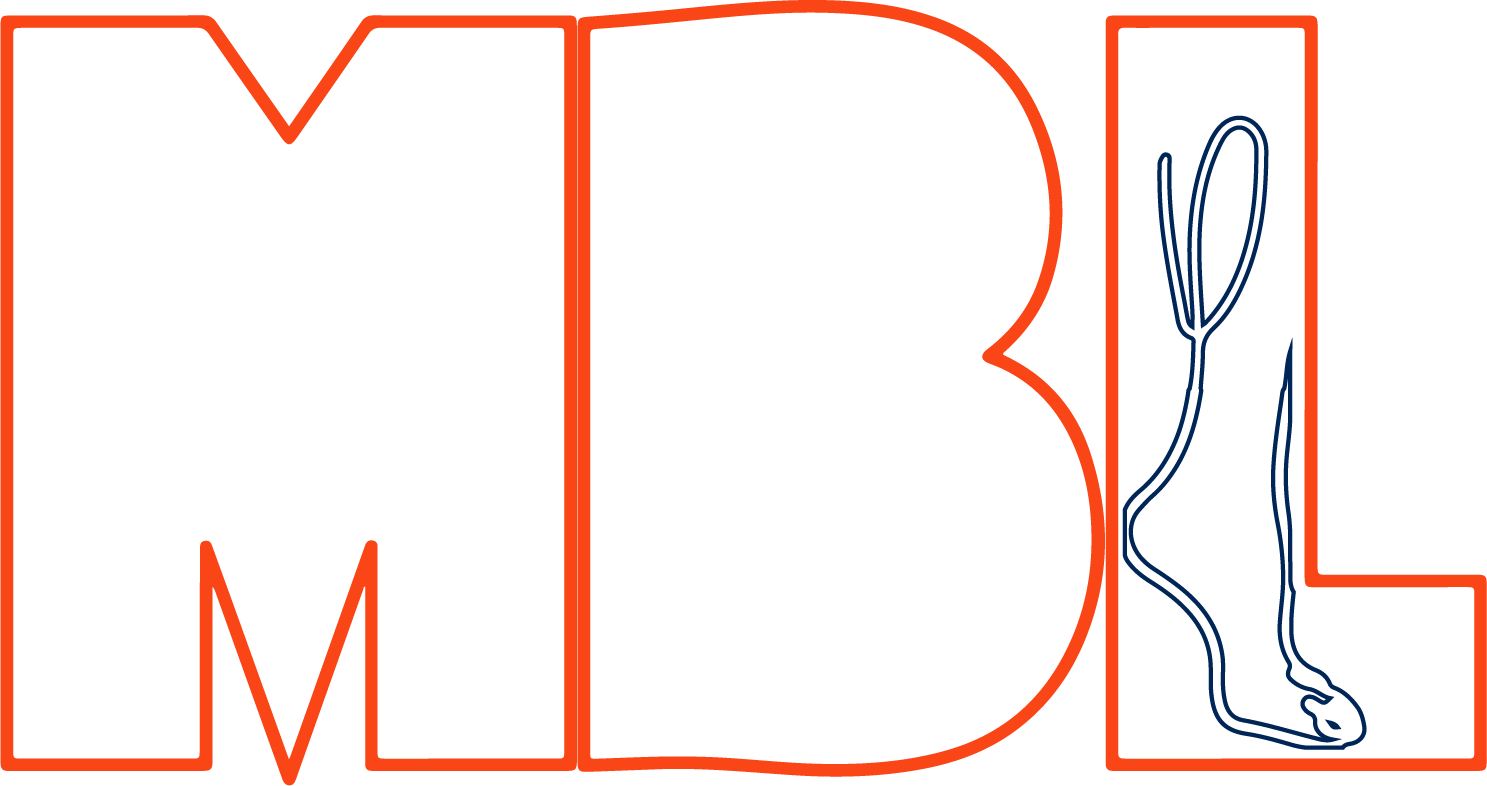Research
Vision Statement: To create predictive, biomechanical models that will improve the functional ability and quality of life of individuals with musculoskeletal disorders.
The vision, mission, and values that guide our research and our lab culture are described further in the Musculoskeletal Biomechanics Lab Guidebook.
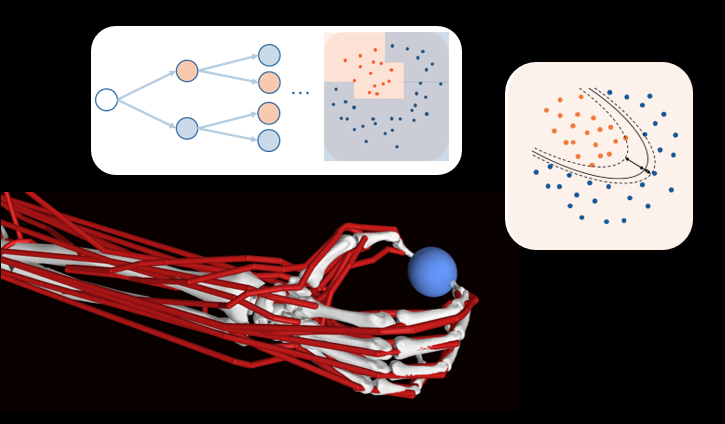
Personalized Musculoskeletal Models via Machine Learning
The wrist and hand are one of the most complex joint systems in the human body. Computer simulations of hand function involve hundreds of interdependent parameters. We are leveraging recent advances in machine learning to rapidly create subject-specific musculoskeletal models. This work also aims to enhance analyses of complex, multi-dimensional, biomechanical simulation data sets.
Project Lead: Jennifer Nichols, Ph.D.
Collaborator: Joel Harley, Ph.D.
Current Funding:
- “A Transfer Learning Framework for Creating Subject-Specific Musculoskeletal Models of the Hand” (R21 EB030068, NIH NIBIB Trailblazer R21 Award)
Past Funding:
- “Learning Thumb Biomechanics from Large Simulation Datasets” (2019 Outstanding Researcher Award, NIH NCSRR Pilot Project)
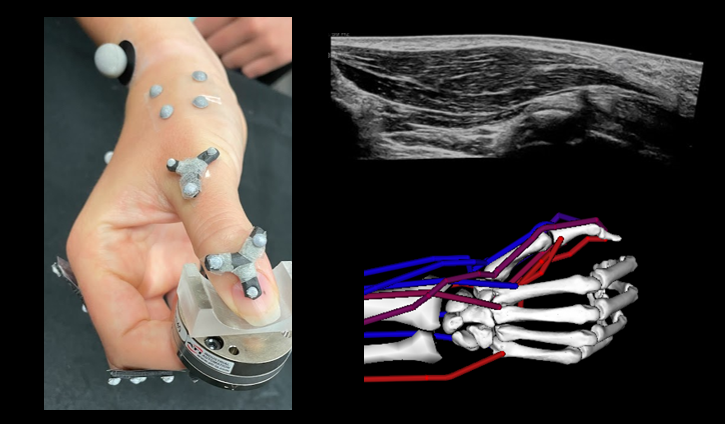
Thumb Osteoarthritis
Carpometacarpal osteoarthritis (CMC OA) is a disabling disease marked by pain and functional loss of the thumb. We are studying how joint degeneration, pain, and movement contribute to symptoms of this disease. This work integrates medical imaging (e.g., ultrasound), human movement biomechanics (e.g., motion capture and electromyography), and quantitative experimental pain measurements (e.g., quantitative sensory testing and movement-evoked pain).
Project Lead: Jennifer Nichols, Ph.D.
Collaborators: Yenisel Cruz-Almeida, M.S.P.H., Ph.D.; Thomas Wright, M.D.; Terrie Vasilopoulos, Ph.D.
Current Funding:
- “Carpometacarpal Osteoarthritis: Understanding the Intersection of Muscle Mechanics, Joint Instability, and Pain” (NIH NIAMS R01 AR078817)
- “Identifying Phenotypes in Carpometacarpal Osteoarthritis through Pain, Biomechanics, and Machine Learning Analyses” (NIH NIAMS F30 AR085997, awarded to Jessica E. Molina)
Past Funding:
- “Integrating Biomechanics and Experimental Pain to Understand Compensatory Mechanisms in Symptomatic Carpometacarpal Osteoarthritis” (NIH NIA F31 AG074645, awarded to Tamara Ordonez Diaz)
- “Carpometacarpal Osteoarthritis: Towards Identification of Biomechanical, Neuromuscular, and Somatosensory Mechanisms” (CTSI NIH KL2 Scholar Program)
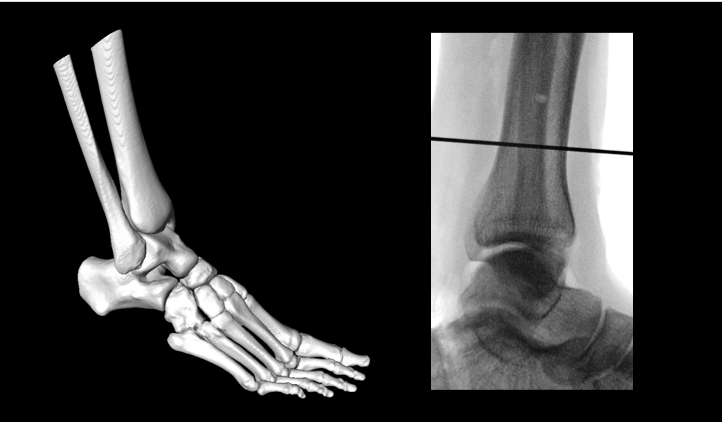
Ankle Syndesmosis
Ankle syndesmosis injuries occur when the ligamentous connection between the distal tibia and fibula is damaged. We are examining how patient- and surgeon-specific factors influence clinical outcomes and ankle health. On the patient side, we are evaluating the relationship between tibiofibular alignment and patient-reported outcomes. On the surgeon side, we are designing and assessing surgical techniques. This work involves gait analysis, image processing, and eye-tracking. Aspects of this work are protected by a provisional patent application.
Project Leads: Jennifer Nichols, Ph.D. and Christopher W. Reb, D.O.
Current Funding:
- “Integrating Musculoskeletal and Data-Driven Modeling to Understand the Biomechanical Sequelae of Syndesmotic Repair” (NIH NIAMS F31 AR083286, awarded to Chloe Baratta)
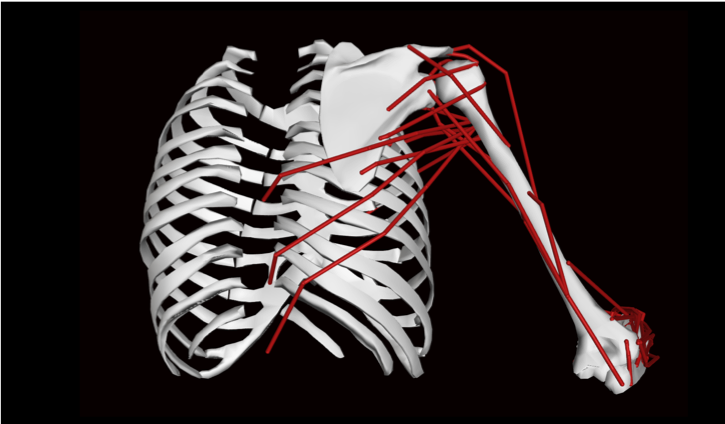
Rotator Cuff Tears
Shoulder pathologies, such as rotator cuff tears, are a common source of pain and workplace injury. We are studying how movement and muscle activity change in the presence of symptomatic and asymptomatic injury. This work involves motion analysis, electromyography, ultrasound imaging, and dynamometry.
Project Leads: Jennifer Nichols, Ph.D. and Federico Pozzi, P.T., Ph.D.
Collaborators: Jay King, M.D., Kuang Gong, Ph.D., Andy Karduna, Ph.D., Richard Souza, Ph.D. P.T., and Subharup Guha, Ph.D.
Current Funding:
- “Biomechanics Contributions to Symptoms and Joint Health in Individuals with Rotator Cuff Tears” (NIH NIAMS R01 AR084273)

AI-Powered Athletics
AI-Powered Athletics, which is one of the five projects within the UF & Sport Collaborative, aims to develop new scientific approaches for monitoring health and well-being of individuals, tracking team performance in diverse settings, advancing wearable sensor technologies, and informing decisions that help reduce time loss injuries. This project is jointly led by the Herbert Wertheim College of Engineering and University Athletics Association (UAA).
Engineering Leads: Jennifer Nichols, Ph.D., Kristy Boyer, Ph.D., and Daniel Ferris, Ph.D.
UAA Leads: Spencer Thomas, Stacey Higgins, and Dave Werner
Current Funding:
- University of Florida Presidential Strategic Initiative Funds as part of the UF & Sport Collaborative
